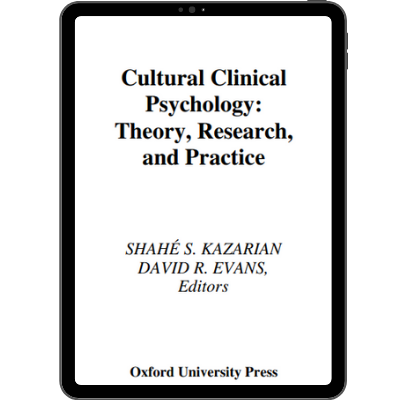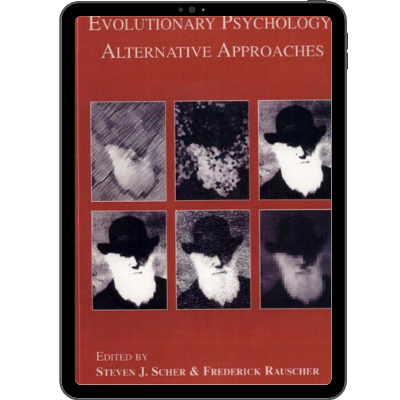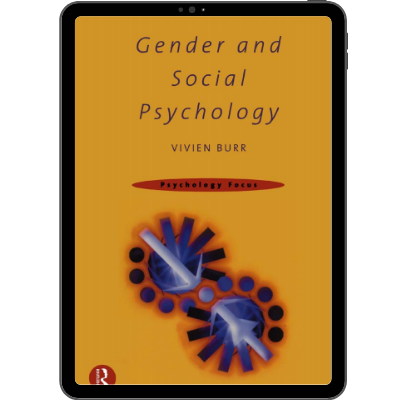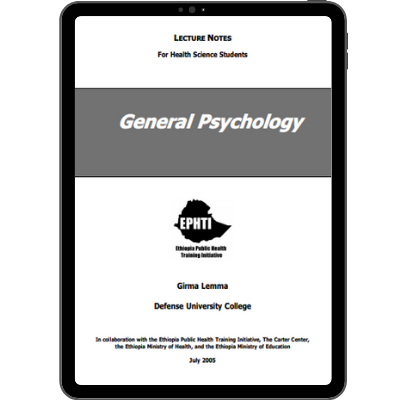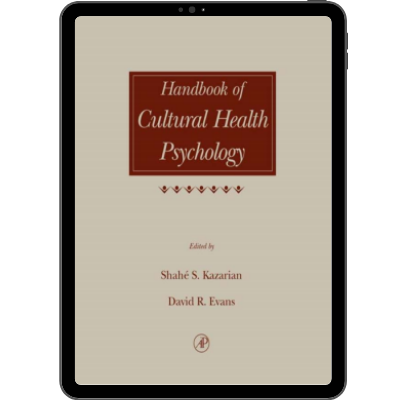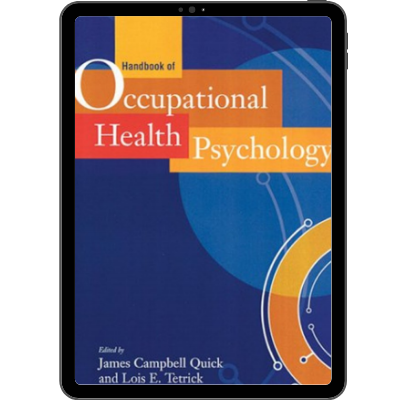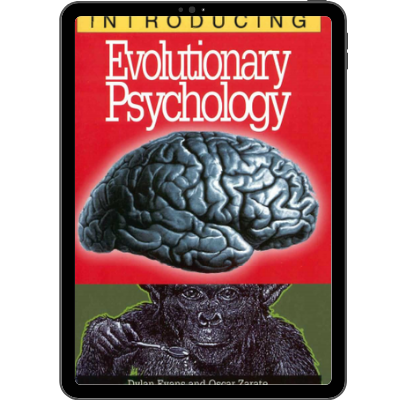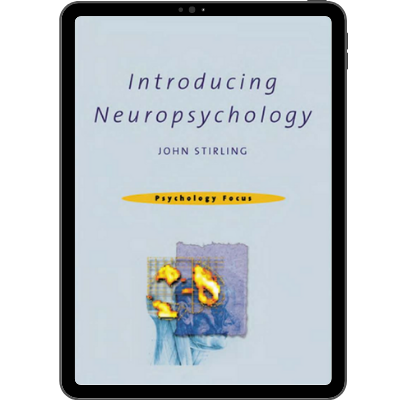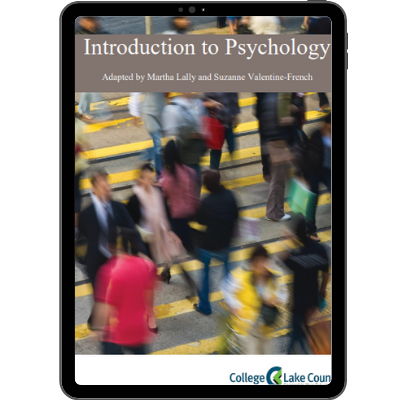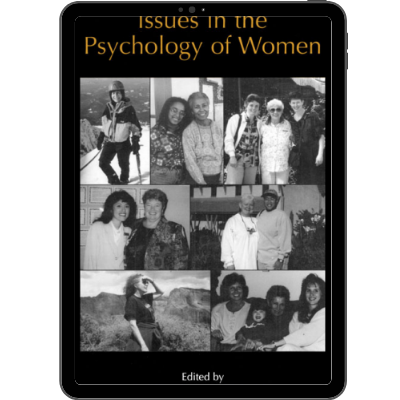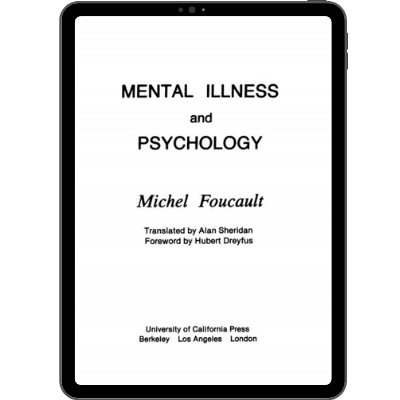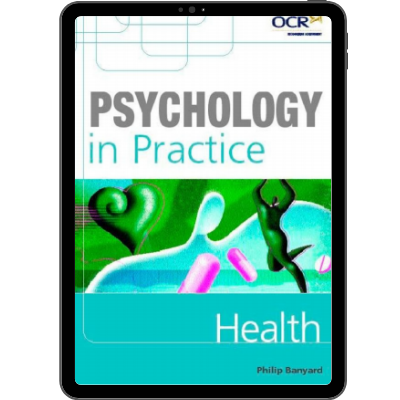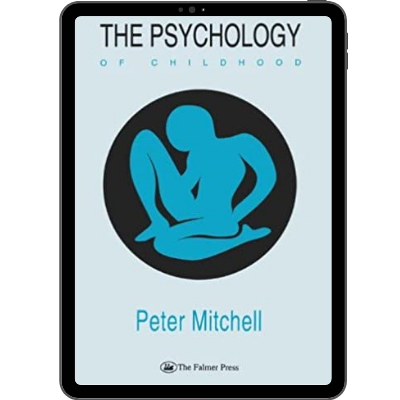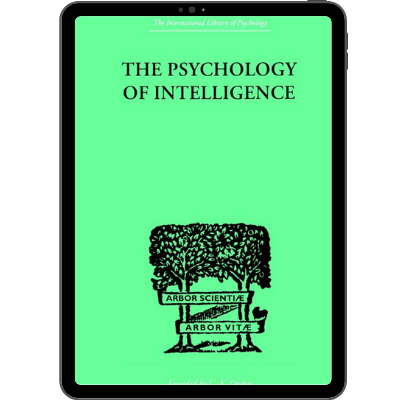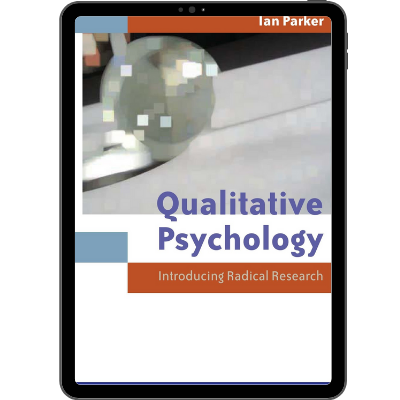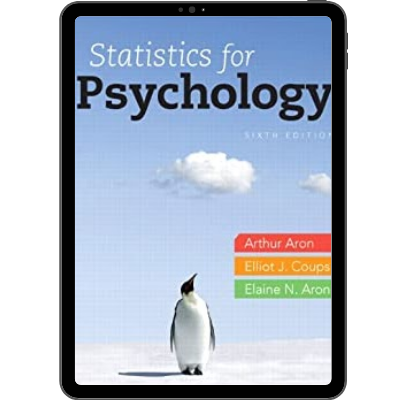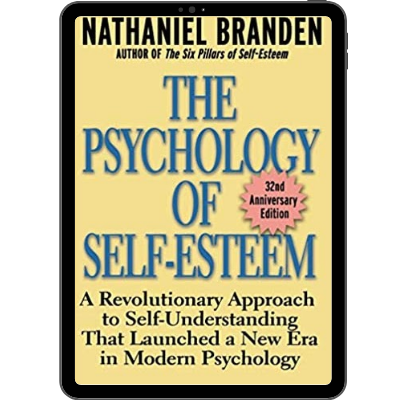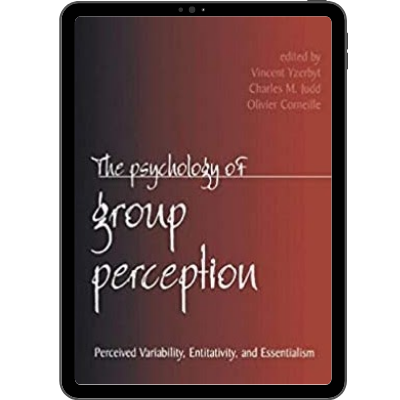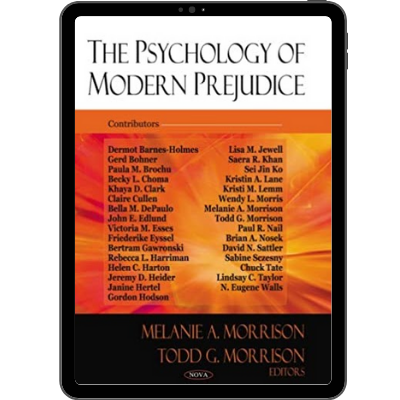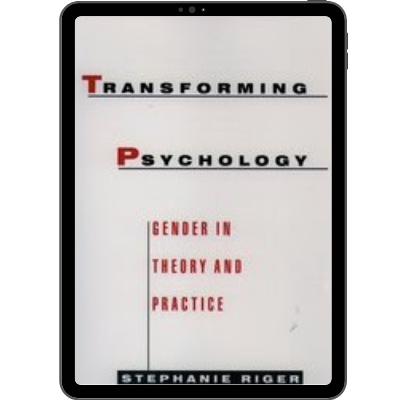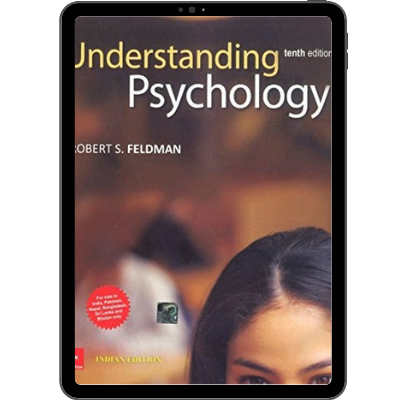PSYCHOLOGY
Abnormal Psychology provides a thorough grounding for undergraduate students with little or no previous knowledge of this complex area of psychology. The focus is on clinical descriptions, using illustrative case studies, and on the implications of the major theoretical perspectives and relevant empirical evidence for clinical treatment. The author presents a very readable and up-to-date review of topics including childhood behaviour disorders, anxiety, depression schizophrenia, personality disorders and models of abnormal behaviour and illustrates a scientific approach to the understanding of these aspects of abnormal psychology.
When reflecting on the work involved in putting this book together, a metaphor came to mind: one of those wonderful tapestries compiled by many hands. My role has been to encourage and admire some pieces so beautifully done that they mustn’t be touched, to rework, gently and carefully, some of the complex and less tidy elements and to find opportunities for individual talents to be displayed. The end-result has, in my view, and I hope in yours, fully justified the work involved. There were doubters when the ABP started. After all, business psychologists earn their living by their ability to add something special to their clients - something that these clients are willing to pay for.
Clinical Psychology strives to present an in-depth look at the field of clinical psychology, and documents the many activities of clinical psychologists. This book emphasizes empirically supported assessment and treatment approaches, as well as the influence of culture, gender, and diversity in these approaches. This edition of the text has been updated to reflect changes in the field of clinical psychology and new empirical evidence evaluating major approaches to prevention, assessment, and treatment.
This book has been produced as the core text for the Open University’s level 3 course in Cognitive Psychology (DD303). However, it has been designed to serve students taking other courses in cognitive psychology as well, either as essential or recommended reading. There are a number of features of the design of this text that we hope will serve well both students learning about cognitive psychology and educators teaching the subject.
Activities and contributions of contemporary clinical psychology are very appealing to many who are fascinated by human behavior and relationships. The enormous popularity of psychology as an undergraduate major; of clinical psychology as a career option; and of popular press psychology books, movies, and television shows is a testament to the inherent interest of clinical psychology. The goal of clinical psychology is noble: to use the principles of psychology and our understanding of human behavior to promote health, happiness, and quality of life. Contemporary clinical psychology is changing and growing at a rapid pace.
To Professor Halla Beloff who encourages diversity.
Edited by GLYNIS M. BREAKWELL
Research
First published 2004 by The British Psychological Society and Blackwell Publishing Ltd Library of Congress Cataloging-in-Publication Data Doing social psychology research / edited by Glynis M. Breakwell. – 1st ed. p. cm. Includes bibliographical references and index. ISBN 1-4051-0811-8 (alk. paper) – ISBN 1-4051-0812-6 (pbk : alk. paper) 1. Social psychology – Research – Methodology. I. Breakwell, Glynis M. (Glynis Marie) HM1019.D65 2004 302–dc22 2003015768 A catalogue record for this title is available from the British Library.
The purpose of this book is to describe cultural clinical psychology with a view toward providing a meaningful integration of the fields of clinical psychology and cross-cultural psychology. Two interrelated factors provided the impetus for undertaking this project. The first was the experience of the first author in an academic setting in which he designed a graduate course to familiarize students in a clinical psychology program with the role of culture in research, practice, and training in clinical psychology. Efforts to secure an appropriate textbook for the proposed course on the interface between clinical psychology and cross-cultural psychology were compromised by the dearth of comprehensive and conceptually integrated resources on the subject.
This book contains information obtained from authentic and highly regarded sources. Reprinted material is quoted with permission, and sources are indicated. A wide variety of references are listed. Reasonable efforts have been made to publish reliable data and information, but the author and the publisher cannot assume responsibility for the validity of all materials or for the consequences of their use. Neither this book nor any part may be reproduced or transmitted in any form or by any means, electronic or mechanical, including photocopying, microfilming and recording, or by any information storage or retrieval system, without prior permission in writing from the publisher. The consent of CRC Press does not extend to copying for general distribution, for promotion, for creating new works, or for resale. Specific permission must be obtained in writing from CRC Press for such copying. Direct all inquiries to CRC Press, 2000 N.W. Corporate Blvd., Boca Raton, Florida 33431. Trademark Notice: Product or corporate names may be trademarks or registered trademarks, and are used only for identification and explanation, without intent to infringe.
This book works on and from the following assumptions. One, that academic psychology and the social sciences are very largely secularised. This means that they do not invoke metaphysical concepts such as ‘god’, ‘gods’, ‘spirit’ or some other conception of a supreme being or grand designer in order to explain how people think and behave. And the second assumption is that psychology and the social sciences embrace a secular view of life and humanity which encompasses a more-or-less explicit acceptance that life forms on earth, including human beings, and that there is at least tacit acceptance that evolution has come about by the process of natural selection. Subscribing to these assumptions, this book goes one step further and adopts the view that an evolutionary approach to the human mind and human behaviour is fruitful and can compliment other approaches.
"Narrow evolutionary psychology" is a description meant to be evaluatively neutral, in essence meaning only the term "evolutionary psychology", narrowly construed to refer to one particular approach. By using this term, we mean to indicate only that this perspective operates with a narrower range of assumptions than the whole field of evolutionary psychology, broadly construed. The term "narrow evolutionary psychology" was independently arrived at by the editors and by one of the chapter 1 authors (Wilson). For all other chapters, its insertion was instigated by the editors. In the late 1 980's and early 1 990's, a number of papers using this approach appeared in the empirical psychology literature. For example, Cosmides' ( 1 989) exhaustive examination of the Wason Selection Task argued for a Darwinian approach to reasoning; Buss' ( 1 989; Buss et aI., 1 990) large cross-cultural study of preferences in mates argued for a set of universal gender differences; and Kenrick & Keefe's ( 1 992) exploration of age and gender differences in mate preferences added life-history ideas to the tools appearing in the psychological literature.
Cycles of Contingency: Developmental Systems and Evolution, Susan Oyama, Paul E. Griffiths, and Russell D. Gray, editors, 2000 Coherence in Thought and Action, Paul Thagard, 2000 Evolution and Learning: The Baldwin Effect Reconsidered, Bruce H. Weber and David J. Depew, 2003 Seeing and Visualizing: It’s Not What You Think, Zenon Pylyshyn, 2003 Organisms and Artifacts: Design in Nature and Elsewhere, Tim Lewens, 2004 Molecular Models of Life: Philosophical Papers on Molecular Biology, Sahotra Sarkar, 2004 Evolution in Four Dimensions, Eva Jablonska and Marion J. Lamb, 2005 The Evolution of Morality, Richard Joyce, 2006 Evolutionary Psychology as Maladapted Psychology, Robert C. Richardson, 2007
Easy to understand, especially for those students with no background in Psychology. The material and examples appeal to the everyday experience of most students.’ Barbara Deguzis, research student, Bolton Institute Gender and Social Psychology critically evaluates the contribution that psychology has made to the study of gender, examining key issues such as family roles and parenting, inequalities in education, jobs and pay, and the effects of media representation of the sexes.
Defense University College In collaboration with the Ethiopia Public Health Training Initiative, The Carter Center, the Ethiopia Ministry of Health, and the Ethiopia Ministry of Education, July 2005.
Important Guidelines for Printing and Photocopying Limited permission is granted free of charge to print or photocopy all pages of this publication for educational, not-for-profit use by health care workers, students or faculty. All copies must retain all author credits and copyright notices included in the original document. Under no circumstances is it permissible to sell or distribute on a commercial basis, or to claim authorship of, copies of material reproduced from this publication.
The field of health psychology encompasses approaches to health promotion and maintenance; the treatment, rehabilitation and prevention of ill health; the identification of etiologic and diagnostic correlates of ill health, disability, and handicap; and the analysis and reform of health care systems and policies. Culture, however, has received marginal consideration in health psychology even though the value of culture in human behavior in general, and health in particular, has had historical and contemporary recognition.
"Handbook of Occupational Health Psychology" brings together an international group of scholars to address a wide variety of topics relevant to this rapidly growing field. From issues of workload and workplace safety, to work schedules and social environments to job future and content, this handbook offers tools intended to combat risks at their source. This is an important resource forscholars, researchers, and practitioners in occupational health psychology, public health, and medicine.
Actions Are Caused by Mental Processes Psychology is the science of human behaviour. It attempts to explain why humans act the way they do. We are all amateur psychologists. We constantly offer explanations for our actions and for the actions of others. For example, when I see Jim pick up an umbrella as he leaves the house, I might explain this action in the following way.
Introducing Neuropsychology investigates the functions of the brain and explores the relationships between brain systems and human behaviour. It draws on both established findings and cutting edge research. The material is presented in a jargon-free, easy to understand manner and aims to guide students new to the field through current areas of research. John Stirling’s Introducing Neuropsychology not only covers brain function but gives clinical examples of what happens when different brain regions are damaged. The text deals first with the basics of neuropsychology.
All rights reserved. Except for the quotation of short passages for the purpose of criticism and review, no part of this publication may be reproduced, stored in a retrieval system, or transmitted, in any form or by any means, electronic, mechanical, photocopying, recording or otherwise, without the prior written per mission of the publisher or a licence from the Copyright Licensing Agency Limited. Details of such licences (for reprographic reproduction) may be obtained from the Copyright Licensing Agency L td of 90 Tottenham Court Road, London WlP OLP. A catalogue record of this book is available from the British Library ISBN 0 335 20497 X (ph)
Over the past 15 years, I (MB) have taught a graduate-level course in Psychology of Women to students in two different professional psychology programs. Because my students were at the doctoral level and often had some familiarity with the psychology of women, these courses focused on bringing a feminist analysis of psychology and integrating a feminist analysis into one’s scholarly work and professional activities. Although I used several fine psychology of women textbooks during this time, I found none that was specifically designed for graduate students. Thus, I always augmented the textbook with journal articles on specific aspects of the topic.
Cognitive Psychology McGinnies (1949) Emotionality and perceptual defence Gardner and Gardner (1969) Teaching sign language to a chimpanzee Deregowski (1972) Pictorial perception and culture Craik and Lockhart (1972) Levels of processing: A framework for memory research Loftus and Palmer (1974) Reconstruction of an automobile destruction: An example of the interaction between language and memory Baron-Cohen et al. (1997) Another advanced test of theory of mind: Evidence from very high-functioning adults with autism or Asperger syndrome Treffert and Christensen (2005) Inside the mind of a savant.
This seminal early work of Foucault is indispensable to understanding his development as a thinker. Written in 1954 and revised in 1962, Mental Illness and Psychology delineates the shift that occurred in Foucault's thought during this period. The first iteration reflects the philosopher's early interest in and respect for Freud and the psychoanalytic tradition. The second part, rewritten in 1962, marks a dramatic change in Foucault's thinking. Examining the history of madness as a social and cultural construct, he moves outside of the psychoanalytic tradition into the radical critique of Freud that was to dominate his later work.
I suppose I have no greater interest in and curiosity about people than average. That’s only because the average is so high. We are intensely social creatures and our desire and need to observe, know, wonder, predict, and attempt to influence or control each other is almost as strong as our hungers for food and water. We are all (with the possible exception of a couple of rare forms of psychopathology) driven to spend much of our time trying to figure each other out. So, even though I am a psychologist, I may not be more interested in people than you are.
The region of Asia has traditionally been acknowledged as a place of peace and harmony, attributed in great part to Eastern cosmology that upholds a philosophy of respecting diversity and creating harmony between human–God, human–human, and human–nature. Asia has also been regarded by many as the cradle of civilization. Many world religions and great faiths have major strongholds in the continent of Asia: from Hinduism and Buddhism, to Jewish, Christianity, Islam, and other faiths such as Shinto and Taoism. All strongly support and encourage their adherents to promote justice and create peace among all fellow human beings on earth. All Asian-born diverse religions and faiths convey the same message of peace: inner peace or salaam (Islam) and shalom (Jewish); peace, love, and mercy (Christianity); avoidance of violence or ahimsa (Hinduism); and absence of all chaos or nirvana (Buddhism).
Published in association with the British Psychological Society, is the definitive introductory textbook for students starting their study of psychology. Written with style and authority by more than 20 leading psychologists from the UK and Australasia, in association with our editorial team; contains comprehensive and integrated coverage of all the major topics in first-year undergraduate psychology; also provides extensive treatment of cutting-edge applied areas such as health, organizational and forensic psychology; each chapter helps students to understand psychology on their own terms.
The aim of this text is give you an introduction into the wide range of links that have been made between psychology and the study of health and healthcare. I hope that the book provides a framework for study that enables you to go and study the subject in more detail, and I hope it is written in an interesting enough way to encourage you to do this. It is aimed, in particular, at students taking the OCR course in A Level psychology, but other people interested in the issues of health and psychology should also find much to engage them. To read this book, you do not need to have a detailed knowledge of psychology, though it would be helpful if you are aware of the basic concepts.
The Interconnected Science of Psychology As psychologists, we experience that remarkable moment when realization flashes before us. As instructors, we experience that remarkable moment when the glow of recognition lights up students’ faces. As students, we experience that remarkable moment when two concepts come together to form the larger picture of psychology. These are the remarkable moments of making connections—when a vast array of topics merge into the interconnected system we call the science of psychology.
This series of books on contemporary psychological issues is aimed primarily at ‘A’ Level students and those beginning their undergraduate degree. All of these volumes are introductory in the sense that they assume no, or very little, previous acquaintance with the subject, while aiming to take the reader through to the end of his or her first course on the topic they cover. For this reason the series will also appeal to those who encounter psychology in the course of their professional work: nurses, social workers, police and probation officers, speech therapists and medical students. Written in a clear and jargon-free style, each book generally includes a full (and in some cases annotated) bibliography and points the way explicitly to further reading on the subject covered. Psychology and Social Issues
A book on the “Psychology of Intelligence” could cover half the realm of psychology. The following pages are confined to outlining one view, that based on the formation of “operations,” and to determining as objectively as possible its place among others which have been put forward. The first task is to define intelligence in relation to adaptive processes in general (Chap. I), then to show, by examining the “psychology of thought”, that the act of intelligence consists essentially in “grouping” operations according to certain definite structures
This highly respected, best-selling text offers students an enjoyable, extraordinarily well-written introduction to the psychology of women. Appropriate for students from a wide variety of backgrounds, this comprehensive book captures women's own experiences through direct quotations and an emphasis on empirical research. Known for her balance of scholarship and readability, as well as for her inclusion of women from diverse backgrounds, Margaret Matlin continues to lead the way for the Psychology of Women course. Matlin has meticulously updated this edition to reflect the most current research, and continues to exhibit a genuine interest in and understanding of the students for whom the book is written. Her text includes a chapter on old age, and discussions of topics such as welfare issues, pregnancy and women's retirement, which are central in many women's lives, but not consistently covered in other texts.
Almost everyone who sees this image by Lois Greenfield stops, stares, and then whispers the word “Wow.” We did too. Why is this image so captivating? Throughout history, human beings have seen themselves as creatures that exist somewhere between the mundane and the divine. The figure in this image appears to be both descending from the heavens and rising from the earth, briefly suspended between two worlds, engaged in some uniquely human ritual that neither the gods above him nor the beasts below him can fully comprehend.
This book is designed as a practical guide for students that is also grounded in the latest developments in theory in psychology. Readers are introduced to theoretical approaches to ethnography, interviewing, narrative, discourse and psychoanalysis, with each chapter on these approaches including worked examples clearly structured around methodological stages. A case is made for new practical procedures that encourage students to question the limits of mainstream psychological research methods. Resource links guide students to theoretical debates and to ways of making these debates relevant to a psychology genuinely concerned with critical reflection and social change.
Socrates’ moral psychology is widely thought to be “intellectualist” in the sense that, for Socrates, every ethical failure to do what is best is exclusively the result of some cognitive failure to apprehend what is best. Until fairly recently, the view that, for Socrates, emotions and desires have no role to play in causing such failure went unchallenged. This book argues against the orthodox view of Socratic intellectualism and offers in its place a comprehensive alternative account that explains why Socrates believed that emotions, desires, and appetites can influence human motivation and lead to error.
How This Book Was Dramatically Different from the Start Our fervent desire from the outset has been to provide a text that makes learning statistics truly more enjoyable and less distressing for students. Throughout the book, we emphasize the intuitive, de-emphasize the mathematical, and work to explain everything in direct, simple language. Further, to accomplish our goal, we have in every edition stood by seven key innovations.
Study Skills for Students This practical handbook is an essential companion for psychology students. From day one of your degree, it will make all the difference. Based on the authors’ extensive knowledge of psychology, it includes: ◆ Key approaches in psychology ◆ The best ways to study ◆ How to use IT effectively ◆ Producing excellent assignments and exams ◆ Helpful advice on statistical methods ◆ Tackling projects and dissertations ◆ An introduction to careers in psychology It contains exercises, tips, advice from students, and a glossary of commonly used terms in psychology.
This two-volume, accessible resource covers the entire spectrum of psychology, including: notable people, theories and terms; 40 landmark case studies and experiments; over 30 primary source materials; applications of psychology in advertising, medicine and sports; and career information. More than 800 articles -- 150 of those are entirely new and 650 are updated since the last edition. Each article ranges from 25 to 1,500 words, covering the topics researchers want to know about, including: Advertising psychology, Alzheimer's disease, Autism, Deep brain stimulation, Sigmund Freud, Meditation, Posttraumatic stress disorder (PSTD), Benjamin Spock, Sports psychology, Stanford Prison experiment, Test anxiety, Unconscious motivation, and Workplace violence. In addition to that there are more than 200 photographs, charts and graphs, students will also find Key Terms and Further reading sections, as well as an expanded glossary, an updated organizations appendix and an in-depth two-level index.
This new edition of the original text reveals how Nathaniel Branden's landmark book broke the rules of conventional behavioral theory and promulgated his revolutionary ideas on the critical role that self-esteem plays in living a healthy, fulfilling life. The book offers an in-depth exploration of the need for self-esteem, the nature of that need, the conditions of fulfillment, and how self-esteem (or lack of it) affects our values, responses, and goals. Branden also debunks the misguided notion that self-esteem is a "feel-good phenomenon" and shows instead how self-esteem, rationality, perseverance, self-responsibility, and personal integrity are all intimately related.
This book emerged out of the enthusiasm that followed a meeting held in Louvain-la-Neuve, Belguim in July 1999. The meeting, devoted to the topic of group perception and cognition, was organized under the auspices of the European Association of Experimental Social Psychology. By all indications the meeting was a huge success. We were fortunate to be able to bring together 25 leading researchers from all over the world. All 25 presented their latest work on the important issues of group perception, and these presentations led us to focus on the particular issues surrounding the central themes of this book: Entitativity, Perceived Variability, and Essentialism of social groups
Purpose of this volume is to highlight recent theoretical and methodological advances in the psychological study of stereotyping, prejudice, and discrimination. To this end, the first chapter by Becky Choma and Gordon Hodson (“And so the Pendulum Swings: A Framework for Conceptualizing the Causes of Prejudice”) details an innovative pendulum framework, which uses two relatively orthogonal dimensions (the perceived situational/personal determinants of prejudice and prejudice as a normal/pathological construct) to create four quadrants. Key theories and individual difference variables that fall into each quadrant are discussed.
No part of this digital document may be reproduced, stored in a retrieval system or transmitted in any form or by any means. The publisher has taken reasonable care in the preparation of this digital document, but makes no expressed or implied warranty of any kind and assumes no responsibility for any errors or omissions. No liability is assumed for incidental or consequential damages in connection with or arising out of information contained herein. This digital document is sold with the clear understanding that the publisher is not engaged in rendering legal, medical or any other professional services.
Interest in the process of writing has grown steadily over the past 20 years. The journey from Janet Emig's (1971) pioneering volume on the composing processes of high school students has been intellectually vigorous and has appropriately attracted researchers from diverse disciplines in the humanities and social sciences. In a relatively short period of time, an impressive literature has emerged on how people go about formulating their thoughts and expressing them in the form of written symbols. After centuries of effort devoted to analyzing and interpreting texts, the contemporary focus on how texts are composed in the first place seems long overdue, particularly to scholars in the humanities and education.
The Institute for Research on Women and Gender at Stanford University gave me a year in which to think and colleagues to stimulate that thought; I am deeply grateful to Iris Litt, Karen Offen, Marilyn Yalom, and other members of the Affiliated and Visiting Scholars Seminar. The Great Cities Institute at the University of fllinois at Chicago gave me time in which to complete the manuscript-and a model of patience and good humor, Helene Berlin, to help prepare it for publication. The Women's Studies Program at the University of Illinois at Chicago continues to give me col leagues who inspire and help me in many ways.







